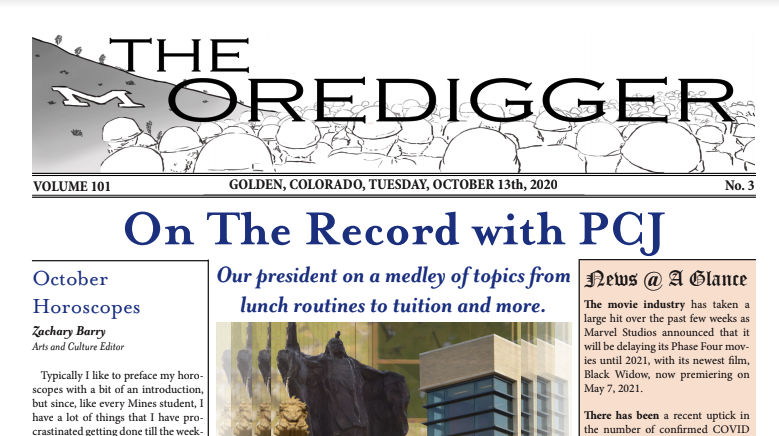For years, professors at the Colorado School of Mines have been working in secret to create the world’s most coveted fictional device—the portal gun. This device is the Mona Lisa for geeks everywhere. As popularized in the game “Portal,” this gun allows people to move between two places without going through the area in between. The user shoots a blue portal on one surface and an orange one on another. When he walks through the blue portal, he emerges from the orange one. This simple manipulation of space proved to be quite the engineering conundrum. Scientists all over the world have tried to perfect the device since its debut in 2007, but only recently have any been successful.
Several professors ran their first test of the device in early March. Although the portals were only large enough to send an apple through them, this was an amazing milestone.
“It’s amazing,” said Jonathan Doe, who was one of only seven to witness the event. “When I played [the game ‘Portal’] I never imagined that this technology could actually exist.”
Even Valve, the developer of the wildly popular game, was surprised to see this result. “We never expected anyone to take our fictional world seriously,” said a spokeswoman, “and to see that our vision has become reality, well, it is simply mind-blowing.” Valve has even offered Mines $1 million to continue this research.
When asked exactly where he would go next, head researcher Dr. Tuyl said, “I would love to make it bigger. It was awesome to watch that apple go through, but I have to wonder what it would feel like. I want to experience it for myself.”
To achieve that goal, the professors need all the help they can get. Just like in the game, the portal gun only works on surfaces coated in moon rock. Much to the dismay of the researchers, synthetic versions simply cannot support the portals. The real resource is so expensive that Valve’s grant will only cover about a quarter of the amount the researchers require.
However, this will not stop the professors. “The portal gun has inspired so many children to become scientists and engineers,” said Dr. Rhode, another professor working on the project. “Could you imagine what the real one would do?”
The professors hope to perfect the device within the next five years. They plan to mass-produce the device with the hope that it may inspire more people to study science and engineering. Although both Rhode and Tuyl believe that they have created a lofty goal, they have faith that this device will spur the curiosity of the world and at least bring some people entertainment.



'A new version of reality – Portal Gun' has no comments
Be the first to comment this post!